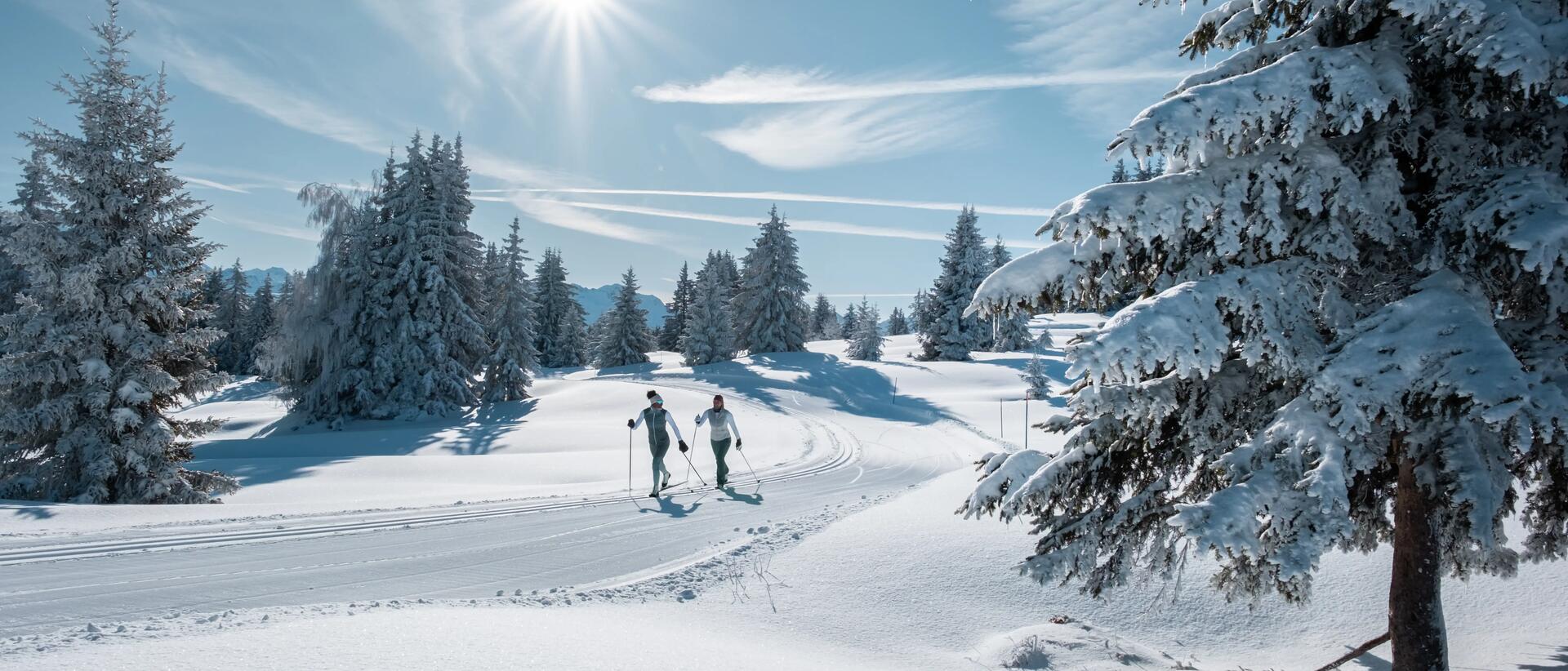1 / What is cross-country skiing?
The origins of cross-country skiing
Born in the Nordic countries in ancient times, cross-country skiing is the oldest ski discipline. Competition saw a sport that started out as a way of getting around become a fun sports discipline and an Olympic event for the first time at the Chamonix Olympics of 1924. It experienced a revolution with the growth of the freestyle practice (skating) and the evolution of the equipment to become a very popular activity from the end of the 19th century.
The practice
Cross-country skiing is practised on groomed trails specifically designed for this practice, and also off-piste on terrain of varying hilliness. As in downhill skiing, the difficulty of the slopes is distinguished by a colour rating, from green, the easiest, to black, the most difficult, through blue and red.
Cross-country skiing is practised according to several techniques which present themselves as disciplines: on piste, we can spot classic cross-country skiing, practised using the diagonal stride technique, and skating, which looks like a skater's motion. Off the pistes, we can spot Nordic cruising which consists of walking off the pistes while remaining close to them, and back country, which allows you to get further away and for longer, similar to ski touring.
In ski resorts nowadays you'll find play spaces where you can easily get started, spaces suitable for toddlers, and cross-country ski instructors who will support you as you first start out or as you progress. France has some of the most beautiful Nordic ski areas where it is possible to practise cross-country skiing in all its forms.








